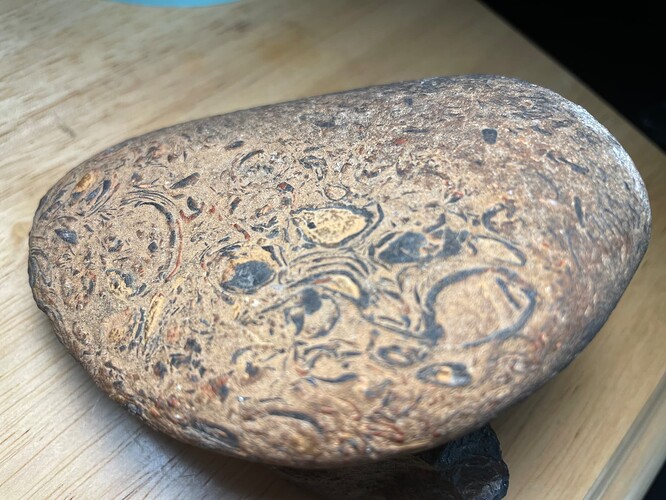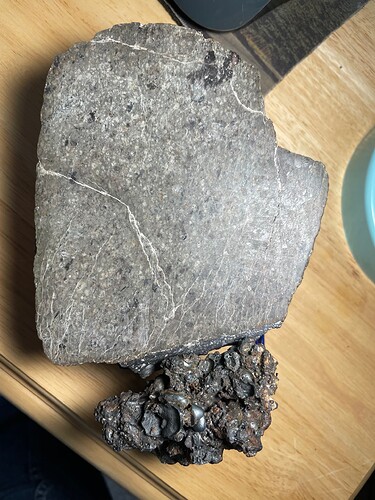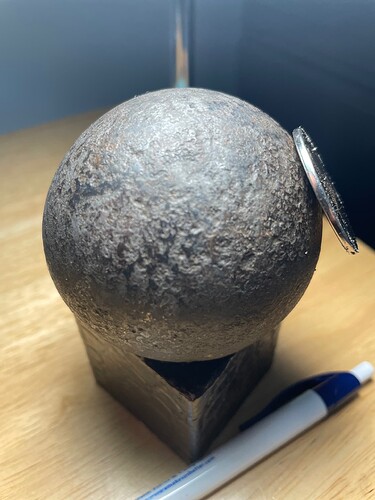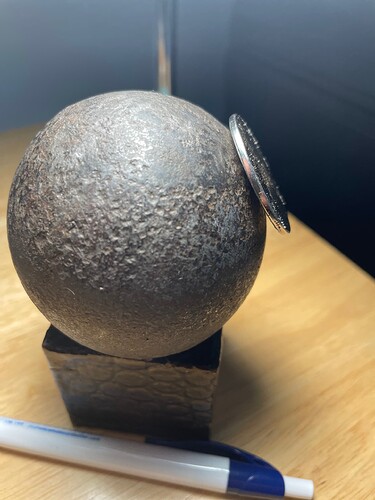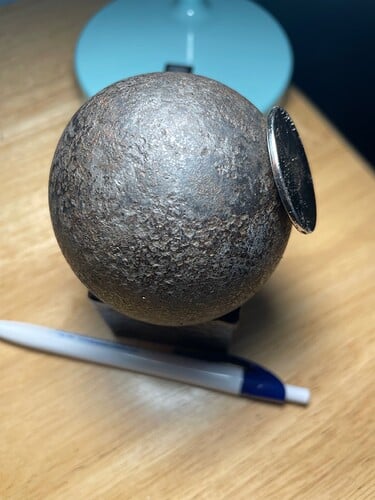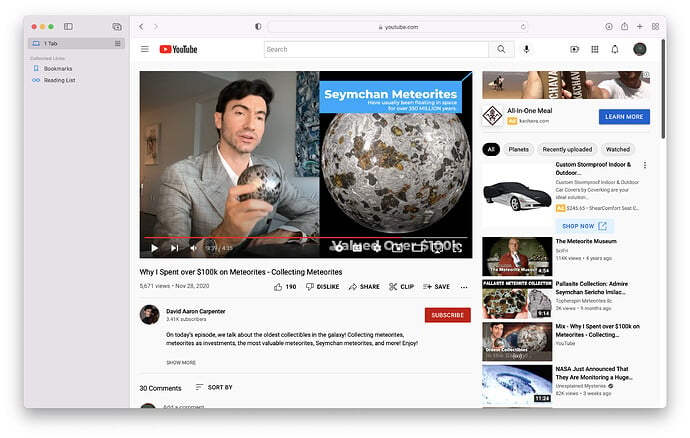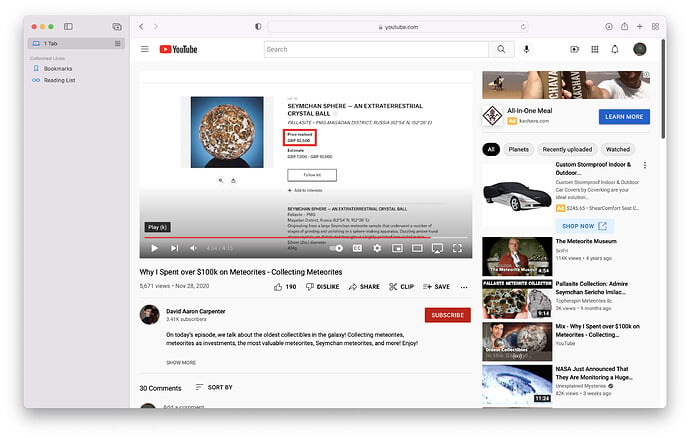Thank you, Michael. I appreciate your observations & insights.
The Universe is a wonderful & awesome expanse! We cannot even begin to understand all that goes on within this expanse, yet it is truly worth our efforts to explore all that we can.
On the subject of “collisions,” I have a particular specimen that speaks of such collisions. I recovered this unusual piece a few years ago in Southwestern Arizona, near Quartzite, AZ. It appears to be the result of a collision between what is known as a “Rubble Pile Asteroid” and a bit of Lunar Olivine Gabbro. It also appears to be the remnant of a much larger Meteoroid. I can only guess at the size of the main mass, but it was likely several kilos, as a good part of the meteorite had vaporized during its entry. Perhaps it was this collision that drove both bodies spinning out of control towards Earth; similar to a high-speed car crash on I-80.
When I recovered this specimen, the “Rubble Pile” formation, which is Rutile (TiO2, Ni & Fe) was solidly attached to the piece of Gabbro. As you can see, there are multiple impact fissures running nearly all the way through the Gabbro. Gabbro, as you know, is a course grained igneous rock consisting of plagioclase feldspar, which is a mantle material. We have, of course, found Gabbro on Planet Earth, as it associated with ocean basalts, and volcanic eruptions. Finding Lunar Olivine Gabbro is a little more difficult, I would suppose.
This specimen would indicate that the Moon was both volcanic, and that at one point, had oceans of water. Or, it would indicate that the Moon’s formation was the result of a massive collision, where elements & minerals of Planet Earth make up parts of the Moon. It is theorized that a Mars-sized, Titanium-rich Orb known as Thea, impacted Earth some 4.2 to 4.4 Billion years ago, while the Earth was still in a molten state. This impact created what is now known as the Pacific Ocean Basin, and the excavated material was launched above Earth and re-accreted to form our Moon. As you stated, “All things are possible!”
As for Earth, itself, we find the remnants of this massive collision in the volcanism surrounding the Pacific Ocean basin, as in the “Ring of Fire” stretching from Indonesia, to the Aleutian Islands, and southward along the North American & South American continents.
All in all, I like to think of this specimen as a “Microcosm” of what is happening routinely throughout the Universe.
As for the “rubble” circulating between Mars & Jupiter, as in the Asteroid Belt, I believe this to be the remnants of a giant impact between two or more large planetary orbs, similar to the impact of Thea & Earth. Unfortunately, the pieces & parts making up the Asteroid Belt have never re-coalesced, so it’s difficult to put the pieces of the puzzle together again. Perhaps Jupiter had something to do with this massive impact event, and why these pieces & parts remain separated.
We may just have to wait until we get to the other side to know exactly what is happening throughout the Universe? Until that time, we will have to act like cats, and hope that our curiosity does not get the best of us!
Cheers, Michael! And thank you again!
Steve
